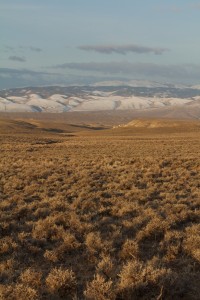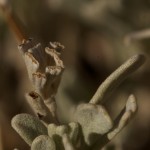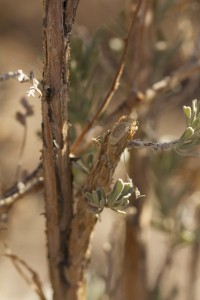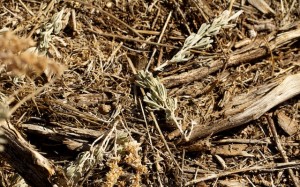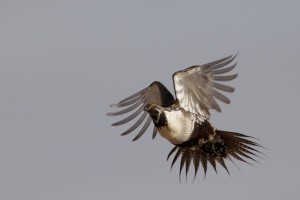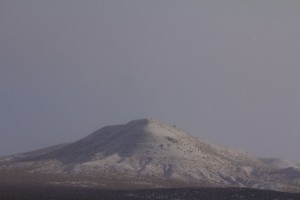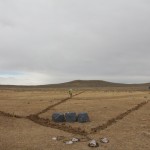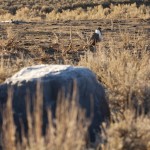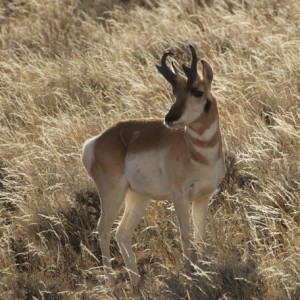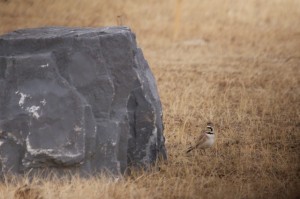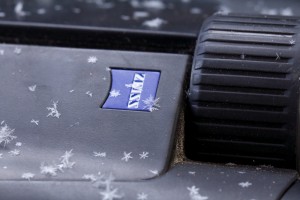 Apart from the habitat and climate, there is another thing that separates birding in Wyoming compared with birding in California, and that is the community of birders out there actually looking at birds. The Bay Area has several Audubon Societies and a balkanization of email lists that distribute bird sighting to their members. In contrast, Wyoming has one email list (with ~250 members) for the entire state! Why does this matter? As citizen science projects such as eBird start to fill in our knowledge of bird distribution and abundance, Wyoming could be left as a blank spot on those maps.
Apart from the habitat and climate, there is another thing that separates birding in Wyoming compared with birding in California, and that is the community of birders out there actually looking at birds. The Bay Area has several Audubon Societies and a balkanization of email lists that distribute bird sighting to their members. In contrast, Wyoming has one email list (with ~250 members) for the entire state! Why does this matter? As citizen science projects such as eBird start to fill in our knowledge of bird distribution and abundance, Wyoming could be left as a blank spot on those maps.
Towards that end, two folks at the University of Wyoming, James Maley and Matt Carling, are again putting out a call for the few of us out there to submit our spring bird sightings to eBird. Hence the Wyoming Bird Bonanza.
One correction to the article I’ve copied below- there is no other registration needed aside from eBird. Matt and James will scour the statewide submissions themselves.
——
This edition of Bird Banter, about the upcoming Wyoming Birding Bonanza, was
published April 7, 2013, in the Wyoming Tribune Eagle. Feel free to disperse
it to anyone interested in participating. Thanks to James Maley,
jmaley1@uwyo.edu, for the information. Contact the author at
bgorges4@msn.com.
Wyoming Birding Bonanza strikes again
By Barb Gorges
Are you ready for the second annual Wyoming Birding Bonanza?
Polish your binoculars because you can be a winner.
The competition was dreamed up last year by James Maley and Matt
Carling, both of the University of Wyoming’s Department of Zoology and
Physiology. James is collections manager of the Museum of Vertebrates and
Matt is an assistant professor.
Their goal is to increase the number of bird observations for Wyoming during
spring migration that are recorded in the eBird.org data base, and to get
birders into the habit of submitting information. The data is used by
scientists.
Last year, the contest ran from mid-April to mid-June but this
year it is being pared back to May 1 – 31, migration peak weeks.
Thanks to sponsors like last year’s, Cheyenne – High Plains,
Laramie and Meadowlark Audubon societies, as well as UW’s Biodiversity
Institute, Audubon Wyoming and eBird, there are prizes. [Author's note: If
you would like to be a sponsor, contact James Maley, jmaley1@uwyo.edu.]
Registered contestants who enter at least 15 checklists will
receive a WBB T-shirt. A checklist is a list of bird species and number of
individuals of each, seen in a particular location during a period of time.
James promises this year’s T-shirt will be a work of art. Everyone who turns
in at least 10 checklists will be entered in a grand prize drawing.
Also, for each Wyoming county, the participant reporting the most species
will win a prize. Last year, I was the Laramie County winner and received
the latest edition of the National Geographic field guide. This year our
county is up for grabs since I’m going to be out less often.
For better odds, try birding Big Horn, Converse and Sublette
counties, where no checklists were turned in last year, James said.
“April, May, and June of 2012 are now the top three months of
all time for number of checklists statewide,” he said. There were 1,282
turned in, compared to 424 for the same months in 2010. A total of 266
species was observed in 2012.
I know I paid closer attention to the birds around me because of
the competition. I found a summer tanager in our backyard May 11, considered
rare for Wyoming.
James passed on a list of other rare bird sightings from 2012:
–1 Glossy Ibis at Meeboer Lake (west of Laramie) on April 17
–1 Lesser Black-backed Gull also at Meeboer Lake on April 17
–1 Black-and-white Warbler at Holliday Park on April 21
–1 Juniper Titmouse at Guernsey State Park on April 22
–1 Long-tailed Jaeger at Hutton Lake NWR on May 3
–1 Northern Cardinal in Laramie on May 4
–5 Short-billed Dowitchers at Hutton on May 5
–1 Snowy Owl at Keyhole State Park on May 15
–1 Blackpoll Warbler at Hereford on May15
–1 Cattle Egret in Rock River on May 17
–1 White-eyed Vireo near Lander on May 28.
So, are you ready to earn that WBB T-shirt? You can do it by
simply counting the birds in your backyard for a few minutes at least 15
different times. Here’s what you need to do.
First, sign up at www.eBird.org, if you haven’t already. It’s
free. Click on the “About eBird” link, and then the “eBird Quick Start
Guide,” the first link on that page.
When setting up your observation locations, select a hotspot marker if there
is one at one of your locations already, such as Wyoming Hereford Ranch or
Lions Park. Otherwise, on the map your personal marker may be hidden
underneath the hotspot’s. You can view your data for a hotspot alone or
collated with everyone else’s. If you have questions about eBird, call me.
Next, sign up for the Wyoming Birding Bonanza at
http://www.uwyo.edu/biodiversity/vertebrate-museum/birding-bonanza/. It’s
also free.
Here are the rules.
Counting:
1. Participants will count only full species as defined by the current
American Birding Association checklist.
2. Birds identified to a taxonomic level above species may be
counted if no other member of the taxonomic level is on the checklist. For
example, duck sp. can be counted if no other ducks are seen.
3. Birds counted must be alive and unrestrained. Sick and
injured birds are countable. Nests and eggs do not count.
4. Electronic devices are allowed, but see ABA’s Code of Ethics for
guidelines.
Time: We will extract final eBird data for the Bonanza on 30 June 2013.
Area: Anywhere in Wyoming.
Conduct:
1. Participants must only count birds unquestionably identified.
If in doubt, leave it out.
2. Know and abide by the rules.
3. Share information with other birders–they’ll thank you.
Good birding to all!
xxx

